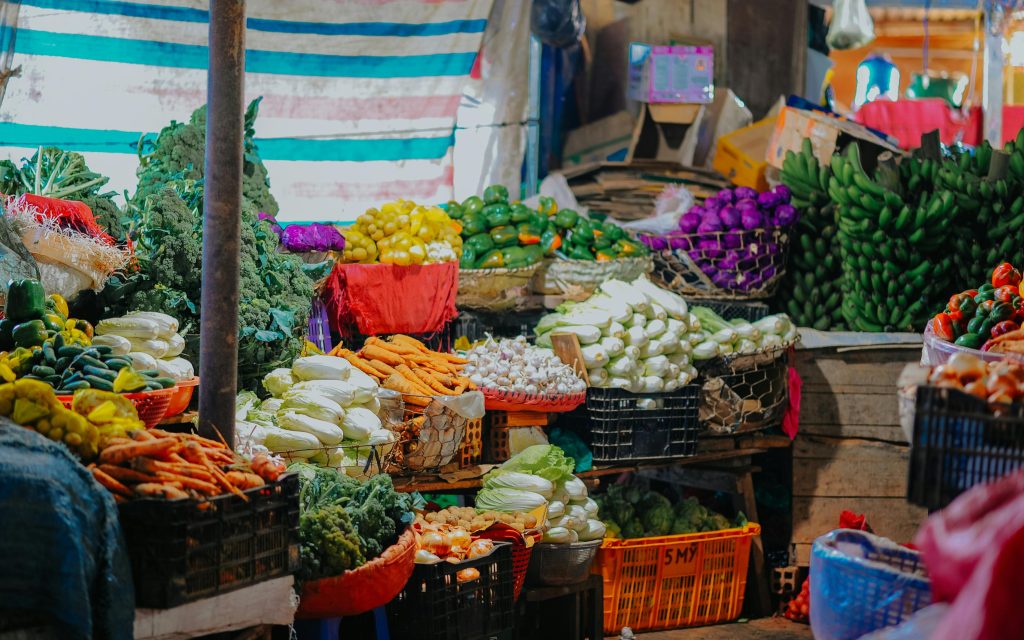In a world where nutrition advice changes faster than TikTok trends and every other food item is a “superfood,” it’s a wonder we haven’t all thrown in the towel and opted for a lifelong diet of cheese puffs and soda. But now, there’s a new twist in the mix: sustainable nutrition. You know, the concept of eating in a way that doesn’t wreck the planet while still keeping us relatively healthy. Think less, “live, laugh, love” and more “eat, thrive, save the bees.”
But what exactly is sustainable nutrition? It’s a mix of eating habits that prioritize our own health as well as the health of the planet. Think whole foods over processed, plant-based meals with a side of mindfulness, and embracing Mother Earth like she’s your cool aunt. The idea is to create meals that not only taste good but also leave you feeling smug about your minimal carbon footprint.
So, how do we dive into this deliciously sustainable lifestyle without getting overwhelmed? Pull up a plate as we serve up some tasty tips on how to eat sustainably for your health and the planet.
1. Plants: Not Just for Decorating the Living Room
First things first, get friendly with plants. No, you don’t have to rename your pothos “Barbara” and chat with it daily. We’re talking about edible plants: fruits, veggies, legumes, and grains. These are the stars of a sustainable diet, packed with nutrients that your body loves and a low carbon footprint that would make Mother Nature proud. Plant-based diets use less water, produce fewer emissions, and don’t require us to chop down rainforests just to keep up with demand.
Practical Tip: Instead of going full vegan overnight, try incorporating more plant-based meals into your week. Meatless Mondays are a great start, as well as…Tofu-Tuesdays? And if tofu isn’t your thing, think hearty veggie chili or a colorful stir-fry packed with bell peppers, carrots, and broccoli. Just remember, it’s not about perfection; it’s about progress. You don’t have to renounce all animal products forever—just a little plant power goes a long way.
2. Embrace Imperfection (AKA, Ugly Veggies Need Love Too)
Have you ever walked past a lonely, oddly shaped carrot at the grocery store? You know the one—it looks like it’s been in a brawl with a cucumber and lost. These so-called “ugly” veggies often end up in the trash just because they don’t look camera-ready. But they’re perfectly good to eat and can even add a little personality to your meals.
Practical Tip: Seek out stores or farmers’ markets that sell imperfect produce. Many places now offer “ugly” fruit and veggie boxes at a discount. Not only are you saving money, but you’re also reducing food waste. Bonus points if you name your veggies. (C’mon, “Bumpy Larry the Butternut Squash” has a nice ring to it.)
Join Our Mailing List
Register now to get our hints and tips newsletter directly to your inbox
3. Go Local or Go Home
Supporting local farmers isn’t just about scoring cool points with the environmental crowd—it’s actually better for the planet. Transporting food across the globe burns fossil fuels like nobody’s business. On the other hand, locally grown produce is fresher, more nutritious, and keeps dollars within your community. It’s like the farm-to-table version of shopping at your neighborhood mom-and-pop store, but with tomatoes.
Practical Tip: Hit up the farmers’ market for produce, honey, and even baked goods. Or, join a Community Supported Agriculture (CSA) program where you get fresh produce directly from a local farm each week. Not only will you reduce your carbon footprint, but you’ll also get access to the freshest fruits and veggies you didn’t even know you loved.
4. Meat: Treat It Like a Special Guest
We’re not saying you have to break up with bacon, but maybe you could…take a break. Meat production, especially beef, is a heavy hitter when it comes to carbon emissions and water usage. Scaling back on meat not only reduces your environmental impact but also gives your wallet a little break. (Hello, have you seen the price of steak lately?)
Practical Tip: Consider meat as a sidekick, not the main event. Try swapping in plant-based proteins like lentils, beans, and chickpeas—they’re versatile, filling, and won’t break the bank. Aim for quality over quantity when you do eat meat. Grass-fed, organic, and free-range options are kinder to the animals and the planet.
5. Mindful Snacking: Your Planet-Friendly Nibbling Guide
Yes, you can snack sustainably! Often, snack foods come with a heaping side of plastic packaging and ingredients that sound like they belong in a science experiment. But by opting for snacks made with whole ingredients and minimal packaging, you’re taking a small but meaningful step towards sustainability.
Practical Tip: Try making your own trail mix, energy balls, or granola at home. Bulk bins are a haven for sustainable snackers—just bring your own containers, fill them up, and voilà! If you’re buying pre-packaged snacks, look for ones with recyclable or biodegradable packaging.
6. Buy in Bulk, and I Don’t Mean the Family-Size Cereal Box
Buying in bulk has become a go-to for the eco-conscious, and it’s not hard to see why. Bulk buying reduces packaging waste, allows you to get only what you need (goodbye, half-used bags of rice), and often costs less per unit. Plus, there’s something oddly satisfying about filling up your own containers like a pioneer for the modern era.
Practical Tip: Invest in some reusable containers and bring them to stores with bulk sections. Many places will even let you weigh your containers before you start filling, so you don’t end up paying for the weight of your jar. Not only is this a fun way to shop, but it also keeps your kitchen looking chic and sustainable.
7. Support Sustainable Brands
In the age of Instagram, companies know we care about sustainability, and more brands are stepping up to the plate with environmentally friendly products. From organic foods to fair-trade coffee, sustainable brands use practices that are better for the environment, farmers, and sometimes even taste better (hello, guilt-free chocolate).
Practical Tip: Do a little research on brands before you buy. Look for certifications like Fair Trade, USDA Organic, or B Corp. A quick online search can tell you if a brand is putting its green where its mouth is or just slapping a leaf on its logo.
8. Save Water, Drink (Sustainably Sourced) Wine
Okay, this one is partially an excuse for a glass of wine, but hear me out. From the water used to grow crops to the energy for transportation, our drinks have an environmental footprint too. Choosing sustainably sourced drinks can make a difference. So, next time you’re at a restaurant, ask about the wine. Not only will you look like a discerning connoisseur, but you’ll also score points with Mother Nature.
Practical Tip: Look for wines labeled as organic or biodynamic. These options are grown without synthetic pesticides, fertilizers, or GMOs, making them better for the planet. Cheers!
9. Food Waste, Be Gone!
If food waste were a country, it would be the third-largest greenhouse gas emitter in the world. Yup, all those forgotten leftovers and overripe bananas are a big deal. Sustainable nutrition isn’t just about what we eat, but also about not wasting it.
Practical Tip: Plan your meals, freeze leftovers, and get creative with those bits and bobs hanging around your fridge. A slightly wrinkled tomato still makes a great pasta sauce, and that sad carrot can be reborn in a soup or stew. Embrace your inner chef and turn leftovers into culinary masterpieces (or at least edible meals).
10. Slow Down and Savor (Yes, This Means No More Scarfing Down Breakfast in the Car)
Eating more sustainably isn’t just about the ingredients—it’s also about the experience. Rushing through meals can lead to overeating, food waste, and general disconnection from what’s on your plate. Sustainable eating encourages us to be mindful and appreciate our food, which, in turn, helps us make better choices for ourselves and the planet.
Practical Tip: Make mealtimes an experience. Sit down, put away your phone, and savor each bite like you’re at a five-star restaurant (even if it’s a Wednesday night and you’re eating soup from a can). Mindful eating can make even the simplest meal more satisfying, and it’ll remind you why sustainable food choices matter.
Final Bites
Sustainable nutrition is a journey, not a sprint. You don’t need to throw out your entire pantry or start milking almonds in your spare time. Just start with a few small changes and build from there. Little by little, you’ll feel better, and so will the planet. And who knows? You might just end up inspiring the next person to grab an “ugly” carrot or pass on that Styrofoam-packed pre-cut pineapple.
Eating sustainably isn’t about being perfect; it’s about making choices that feel right for you, your body, and your taste buds—because the last thing anyone wants is to live in a world without joy in our food.




